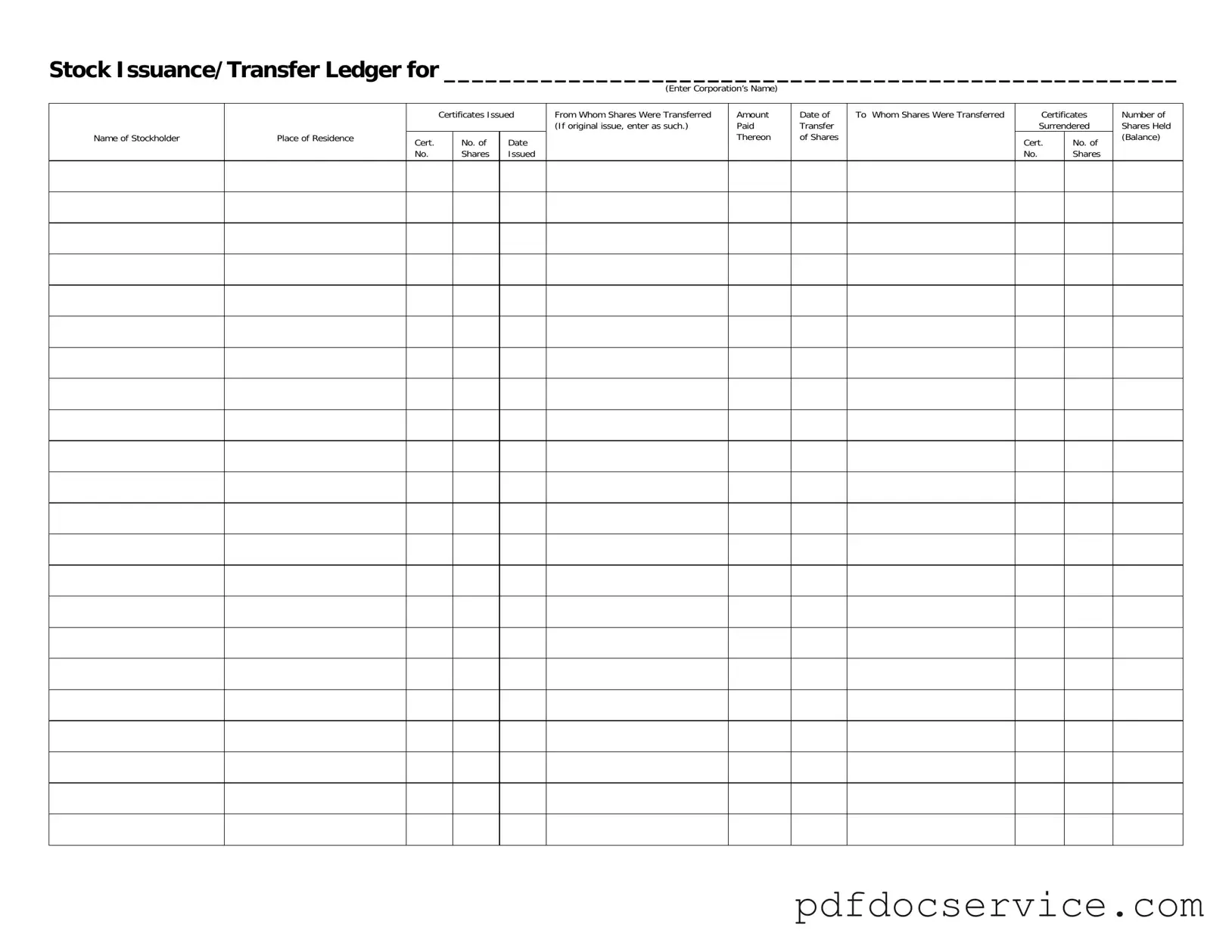The Stock Transfer Ledger form serves as a crucial document in the realm of corporate governance, particularly for corporations managing their stock issuance and transfers. This form meticulously tracks the movement of shares among stockholders, providing a comprehensive record that includes the name of the corporation, the stockholder's details, and the specific certificates issued. Each entry captures essential information such as the certificate number, the date of issuance, and the number of shares involved. Moreover, it delineates the origins of the shares—whether they are part of an original issue or transferred from another stockholder. The ledger also specifies the amount paid for the shares, ensuring transparency in financial transactions. When shares change hands, the form records the date of transfer and identifies the new holder, while also noting any certificates that have been surrendered. Finally, it keeps a running tally of the number of shares held by each stockholder, providing a clear balance that is vital for both the corporation and its investors. This detailed documentation not only aids in compliance with regulatory requirements but also fosters trust among shareholders by maintaining an accurate and accessible record of ownership and transactions.
